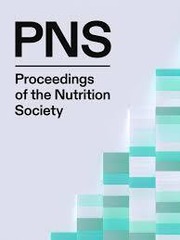Milk and milk products contribute approximately 22 % of the nation's saturated fat (SFA) intake. Recently, the role of dairy and its SFA composition and link to cardiovascular disease (CVD) has been analysed( Reference Lovegrove and Hobbs 1 ), suggesting a beneficial action of this food group on reducing cardiovascular risk in high-risk groups( Reference Díaz-López, Bulló and Martínez-González 2 , Reference Nilsen, Høstmark and Haug 3 ). The aim of this study was to examine the effects of 4 weeks full-fat cheese on circulating lipoprotein fractions, blood pressure and arterial stiffness in healthy adults.
Participants were recruited in the city of Chester, UK. Those meeting entry criteria of: 18–65 years of age, not taking antihypercholesterolaemic or antihypertensive medication took part in the study. Participants were randomised to receive either 50 g of a full-fat Red Leicester (FFC) or placebo (virtually zero fat Cheddar cheese, ZFC) per day for 4 weeks. Anthropometry, blood pressure, brachial and aortic augmentation index (BAIX and AAIX, respectively), pulse-wave velocity (PWV) and a full lipid profile were determined at baseline and post-intervention. Participants were asked to keep a 3-day food diary prior to and for the last 3 days of the protocol. All procedures were approved by the Faculty of Medicine, Dentistry and Life Sciences Research Ethics Committee at the University of Chester.
Table 1. Baseline (T0) and follow-up (T1) measurements

T0, baseline; T1 follow-up, LDL-C, low-density lipoprotein cholesterol; HDL-C, high-density lipoprotein-cholesterol; BAIX, brachial augmentation index; AAIX, aortic augmentation index; PWV, pulse-wave velocity. Data show mean ± SD.
Eighty-six (86) individuals completed the study (43 per group). No significant changes were observed in any measured parameter (Table 1). Both ZFC and FFC groups showed a significant increase in calcium intake during the course of the study (1002·1 ± 639·1 mg to 1815·0 ± 1340·1 mg and 1219·6 ± 1169·1 mg 1845·8 ± 1463·2 mg, P < 0·001, respectively) showing good adherence to the protocol.
In conclusion, these results suggest that inclusion of 50 g full fat cheese into the diet of a healthy population does not impact negatively on traditional CVD risk markers. Future strategies to reduce SFA intake should focus on – and acknowledge the importance of the source – of SFA in the diet.



